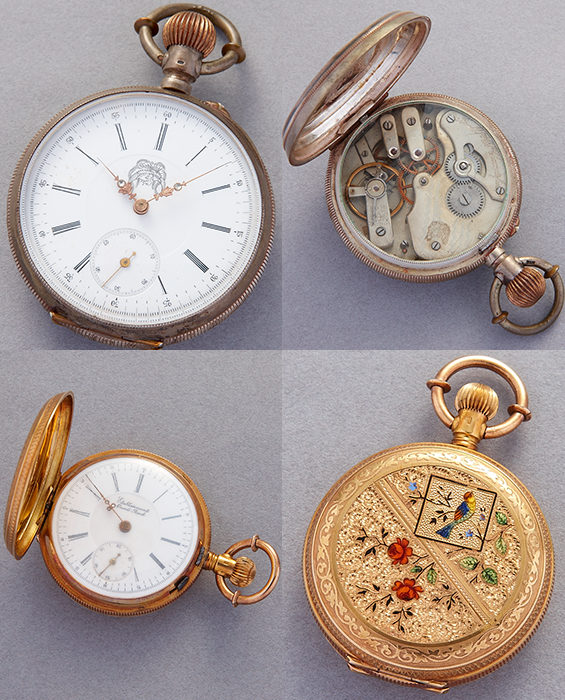The Seiko Museum
5.Portable Time - Pocket Watches
The Seiko Museum has amassed many pocket watches over the years. Dozens of these pieces were imported from Switzerland, France, Germany, and England in the 19th century. They are all visually delightful, especially those with painted enamel cases. One piece is a comparatively minimalist Systeme Brevete G.T. model that perhaps presciently, features a digital face.

Early Days
Most of these timepieces arrived in Japan through Swiss merchants in Yokohama.They imported models for sale through local distributors. Among them was Seikosha founder Kintaro Hattori, who began wholesaling, retailing, and repairing watches & clocks and then started manufacturing clocks. When pocket watches started to become popular in Japan, Mr. Hattori became keen to try producing them himself. He set about modernizing facilities to meet the miniaturization challenges that pocket watches presented.
Seiko's First Pocket Watch
Seikosha initiated pocket watch production by making cases in 1893. Extensive efforts led to the debut of the six-jewel Time Keeper in 1895 as the company's first pocket watch. This model featured a cylinder escapement and likely employed Swiss components. Still, this timepiece was an important step toward the company establishing its credentials as a modern manufacturer.

Seiko's First Pocket Watch - Time Keeper
The company continued to hone its production capabilities, bringing out the Excellent in 1899. It was incidentally in 1899 that the company launched Japan's first alarm clocks. The Excellent was a luxury offering that employed seven jewels and which received an Imperial Award Watch designation in 1907. The Excellent also incorporated some imported parts.
Toward Wristwatches
By around 1912, Seikosha management had devoted a lot of effort to setting up facilities in-house to create all of its own parts. At the same time, the company was looking to both reinforce its pocket watch position while expanding into wristwatches to bolster its competitive position.
The 1913 Laurel was an attempt to straddle both the pocket watch and wristwatch categories. The museum has beautiful examples of both types of this landmark timepiece on display.
While taking portable timepieces in the direction of wristwatches, Seikosha sought to refine its pocket watches for precision applications. Fruits of such endeavors included the company's railroad-approved models, the Seikosha model of 1929 being the first such offering. This was a great testament to Seiko given the renowned precision of train arrivals and departures in Japan. There was also a naval deck watch.

Seikosha
These and other pieces are also proudly on display at the Seiko Museum as gems of portable time.
Next Up…
In the next installment of this series about the Seiko Museum, we overview some of its colorful woodblock prints that feature Japanese clocks.